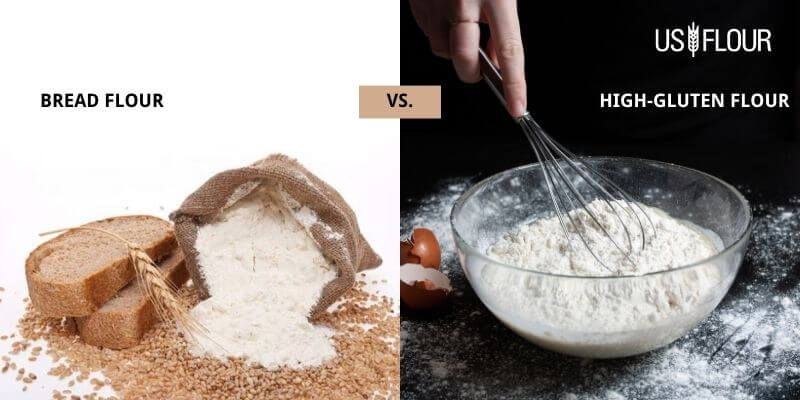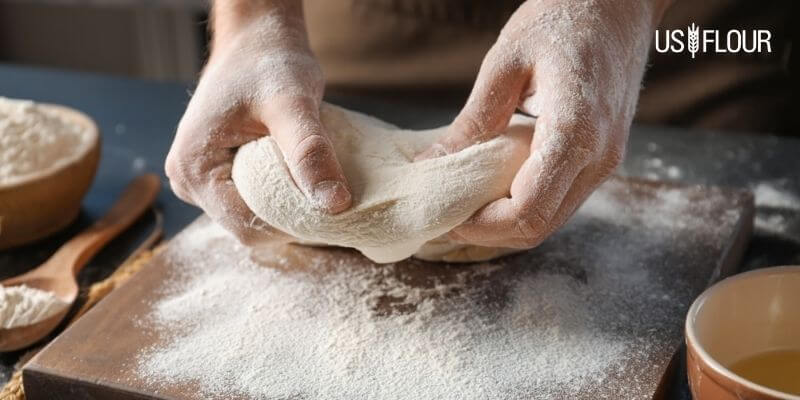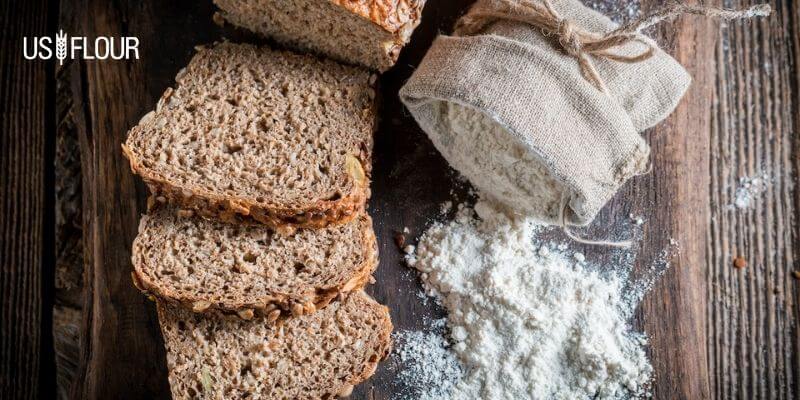Gluten showdown: High vs Bread flour explained

A common item in kitchens is flour. Diverse flour types might result in different baked items. Different varieties of flour, such as bread flour and high-gluten flour, each have particular nutritional advantages. Most of the time, their composition is to blame for the variation, and some are ideally suited for particular baked items.
What is high gluten flour?

Wheat flour contains gluten, which is the main protein. The flour’s protein content is higher the more gluten is present in it. Therefore, high-gluten flour, also known as hard wheat, has a high protein content. The protein content is higher in some types of flour. Hard red spring flour, for instance, has up to 16% protein content, which is higher.
Soft wheat flour has a lower protein content, and the protein content of such flour as cake flour is around 6.3–10%. Baked goods get their chewy texture and shape because gluten absorbs water. For this reason, the capacity of high-gluten flour to retain moisture is greater. This helps hold the baked goods it is used to hold together.
High-gluten flour makes noodles, pastries, bagels, pretzels, pizza crusts, and artisan bread. Also, there are gluten-free flour substitutes you can use in some recipes. 100% white whole wheat flour, bread flour, and whole wheat flour are popular alternatives that you can use in place of high-gluten flour in a 1:1 ratio.
Although the protein content of the substitute flour mentioned is slightly lower, the density and structure of the final baked goods will be comparable to that of high-gluten flour. If you need to improve its texture and moisture and increase its protein, add vital wheat gluten to all-purpose flour in the ratios recommended on the package.
What is bread flour?

No two types of flour are the same because of their composition. Bread flour is similar to high-gluten flour. It is produced from milled hard red winter or hard red spring wheat. It is the best choice to use when baking regular bread.
In terms of appearance, distinguishing bread flour from all-purpose flour is quite easy, as it is a bit creamer and coarser than all-purpose flour. In many cases, manufacturers sell it as unbleached flour. Bread flour is commonly conditioned with ascorbic acid, which increases its quantity.
Additionally, the protein content of bread flour is about 12–13%. This percentage is in between all-purpose flour and high-gluten flour. The presence of a gluten-forming substance in it makes bread flour suitable for use in making rustic hearth bread, regular pizza crust, and traditional yeast loaves.
Also, bread flour holds its shape during the baking process. This means that instead of spreading outward, it rises.
Difference between high gluten flour and bread flour
The process of milling wheat is labour-intensive. However, the end product is flour with different gluten contents. The stretch and recoil properties of gluten give structure to baked goods.
Whether you end up with a difficult-to-chew roll or a flaky croissant depends on whether you use bread flour or high-gluten flour. Mixing leaveners, eggs, sugar, and liquids into any flour depends on experience and the temperature of your oven and kitchen.
Taking a look at the inherent properties of flour, below are some differences between high-gluten flour and bread flour:
1. Gluten
A structure molecule known as gluten is created when the proteins gliadin and glutenin are combined with water, stirred, leavened, and fermented.
After being pulled and kneaded, gluten allows your dough to recoil or return to shape.
Your dough’s ability to be stretched is improved by gliadin. For croissants, soft rolls, and sweet yeast dough, bread flour works best. For the bread that needs the most strength and structure, such as bagels, hard rolls, and thin-crust pizzas, high-gluten flour is preferable.
2. Protein content
Hard wheat makes bread flour—hard red winter wheat or hard red spring wheat. On the other hand, high-gluten flour is made from hard red spring wheat. Hard winter wheat used to make bread flour has a lower protein content than hard wheat grown in cold climates used to make flour with a high protein or gluten content.
The protein content of high-gluten flour is around 13.5%–15.5%, while the protein content of bread flour is around 11.5%–13.5%. The ability of the flour to form gluten increases as the quality of the protein or the protein content of the flour also increases.
3. Starch granules
One more molecule that helps flour form structures is starch. Water is absorbed by starch. During the milling process, starch granules are damaged. Damaged starch granules absorb more water.
Bread flour contains fewer broken starch granules than high-gluten flour. High-gluten flour requires more water than bread flour does when making dough.
4. Potassium bromate
Potassium bromate is a common food additive that strengthens the gluten in high-gluten flours. As a result, the dough made with such flour can be stretched further without breaking. However, according to research, rats have developed cancer after exposure to potassium bromate.
If you are inx the US and want flour, you can ask the baker if potassium bromate is used or check the flour label. Potassium bromate remains legal in the United States.
Conclusion
It’s important to remember that substituting a different type of flour will produce different results than the original when deciding which kind to use. Bread flour will only partially match the flexibility, recoil, and chewiness offered by high-gluten flour because bread flour has less gluten-forming protein.
 Power to The Bakers.
Power to The Bakers.